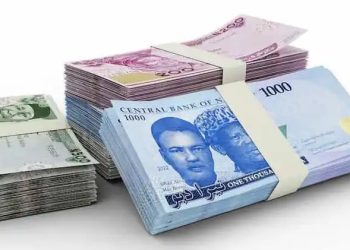Despite global inflation and low productivity across much of the African continent, several African currencies are holding strong against the US dollar. These currencies have managed to withstand inflationary pressures and maintain fiscal stability in their respective nations. Unfortunately, Nigeria’s naira is not among them.
According to a new report, the Nigerian naira has significantly depreciated, falling to an all-time low of N1,669.15 per US dollar on October 2, 2024. This marks a sharp decline from its exchange rate of N430 per dollar in 2023, a direct result of devaluation and dollar shortages. While the naira struggles, other African currencies have shown remarkable resilience against the dollar.
Top 10 Strongest Currencies in Africa
1. **Tunisian Dinar (1 USD = 3.04 TND)**
Despite Tunisia’s economic challenges, strict trade policies and financial measures have helped the Tunisian dinar maintain its strength.
2. **Libyan Dinar (1 USD = 4.74 LYD)**
The Libyan dinar has been one of the continent’s strongest currencies since 1971, bolstered by Libya’s oil wealth and careful fiscal management.
3. **Moroccan Dirham (1 USD = 9.74 MAD)**
Morocco’s dirham benefits from strong trade ties with Europe, particularly through its link to the euro. The currency has a long history and has remained stable despite global challenges.
4. **Botswana Pula (1 USD = 13.18 BWP)**
Botswana’s political stability and strong economy, driven largely by diamond exports, have kept the pula strong since its introduction in 1976.
5. **Seychellois Rupee (1 USD = 13.10 SCR)**
Seychelles’ reliance on luxury tourism and sound financial management have ensured the rupee’s resilience, despite its small economy.
6. **Eritrean Nakfa (1 USD = 15 NFK)**
The Nakfa is pegged to the US dollar at a fixed exchange rate, which has helped Eritrea avoid currency volatility, making it one of Africa’s most stable currencies.
7. **Ghanaian Cedi (1 USD = 15.79 GHS)**
As the strongest currency in West Africa, Ghana’s cedi reflects the country’s growing economy and relative political stability, though inflation remains a challenge.
8. **South African Rand (1 USD = 17.39 ZAR)**
South Africa’s role as a top gold producer underpins the value of the rand, which has remained relatively stable despite fluctuations in global commodity prices.
9. **Zambian Kwacha (1 USD = 26.16 ZMW)**
Zambia’s kwacha is heavily dependent on copper prices, given the nation’s status as Africa’s leading copper producer.
10. **Egyptian Pound (1 USD = 48.37 EGP)**
The Egyptian pound has been floated since 2016 as part of an agreement with the IMF, and while inflation remains high, the pound continues to be one of the strongest currencies on the continent.
Naira Continues to Decline
The Nigerian naira’s steep fall highlights the country’s ongoing struggle with dollar shortages and inflation. On October 2, 2024, currency dealers quoted the naira at N1,669.15 per dollar in the official market, down from N1,541.94 just days earlier. The currency depreciated by 8%, primarily due to a lack of dollar supply from buyers and sellers.
While the naira continues to weaken in the official market, there was a slight improvement in the parallel market, where it appreciated by N10 to trade at N1,680 from N1,690.
Impact of Naira Devaluation
The Central Bank of Nigeria (CBN) has taken steps to stabilize the currency, including hiking the exchange rate for clearing goods at ports, which has risen to N1,587.847 per dollar. However, the depreciation of the naira continues to affect the economy, increasing the cost of imports and adding to inflationary pressures in the country.
As Nigeria grapples with these challenges, the government faces the difficult task of implementing reforms to stabilize the economy and address the growing cost-of-living crisis. The performance of other African currencies shows that strong fiscal management and targeted economic policies can help countries weather global economic storms, a lesson Nigeria must heed to restore confidence in its currency.










